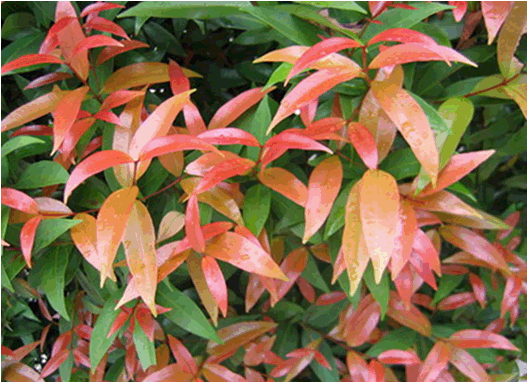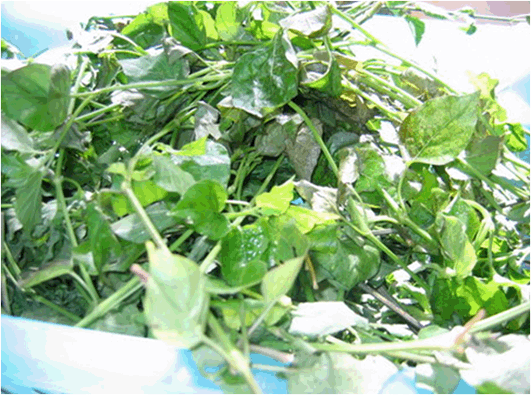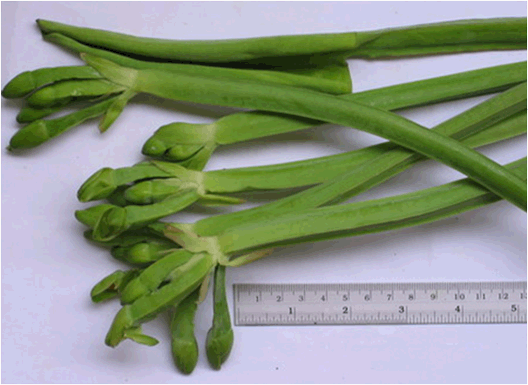Table 1.
The names of three plant extracts and other research references, therapeutic use in Thai traditional medicine screened in this study
| Species [Voucher number] | Family (Common name English/Thai) | Reported major constituents | Therapeutic use in Thai traditional medicine | Edible part | Ref. |
|---|---|---|---|---|---|
Syzygium gratum (Wight) S.N. Mitra var. Gratum [Ch. Laongpol 6]a,c |
Myrtaceae (Eugenia/Phak Mek, Samet chun) |
Not yet clearly determined in chemical structure but proved to be strong in antioxidants and the prevention of oxidative and nitrosative stresses |
Treatment of dyspepsia and indigestion |
Leaves |
22,23 |
Justicia gangetica L. [TK-PSKKU-0066]b |
Acanthaceae (Chinese violet, tropical primrose/Accepted name: Asystasia gangetica ) |
5,11-epoxymegastigmane glucoside (asysgangoside), salidroside, benzyl β-d-glucopyranoside, (6S,9R)-roseoside, ajugol, apigenin 7-O-β-d-glucopyranoside, apigenin 7-O-neohesperidoside, and apigenin 7-O-β-d-glucopyranosyl (1→6)-β-d-glucopyranoside |
Treatment of stomach pain, stomach worms, anti-asthma |
Leaves |
24,25 |
Limnocharis flava L. Buchenau [Patt. 173]c
|
Limnocharitaceae (yellow velvetleaf, yellow burr head/Talabhat reusi) | Undetermined | Appetizer | Stem | 26 |
aVoucher specimens deposited at the Forest Herbarium (BKF), Department of National Park, Wildlife and Plant Conservation, Ministry of Natural Resource, bthe Herbarium of the Faculty of Pharmaceutical Sciences, Khon Kaen University and cthe Prince of Songkla University herbarium (PSU), Department of Biology, Faculty of Science, Prince of Songkla University, Thailand.
